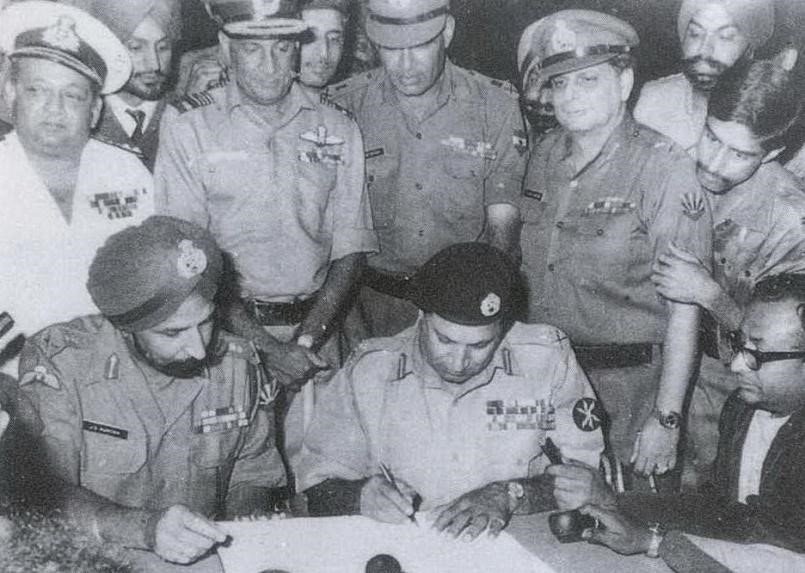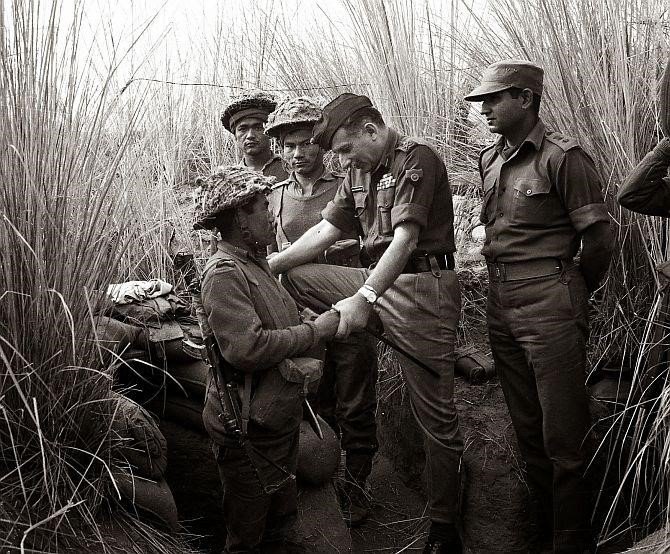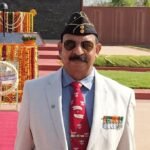India was declared as an independent country at 0001 hours on August 15, 1947, as millions of Indians witnessed the lowering of the Union Jack and the hoisting of the Tricolour by first Prime Minister Pandit Jawaharlal Nehru. He addressed the nation from the ramparts of Red Fort, “Long years ago, we made a tryst with destiny. Now, the time has come for us to redeem our pledge. At the stroke of midnight hour, when the world sleeps, India will awake to life and freedom.”
The tragedy was it was not United India but split into two nations, India and Pakistan, and Lord Cyril Radcliffe’s (chairman of the boundary commission) demarcation of frontiers between the two nations was illogical, hasty and malicious. Moreover, Pakistan had two parts: East and West Pakistan, almost 2200 km from each other. In addition, Kashmir, Hyderabad, Junagadh and Goa wanted to be separate entities. India was fortunate to have Sardar Vallabhbhai Patel as the Union Home Minister and Deputy Prime Minister who orchestrated the amalgamation of Junagadh and Kashmir in India in 1947, and Hyderabad in 1948. Goa was liberated in 1961.
Language Issue
Muslim League President Muhammad Ali Jinnah became the first Governor General of Pakistan and Secretary General Liaquat Ali was appointed the first Prime Minister. Urdu was declared the state language but East Bengalis did not like it. Karachi was the first capital of Pakistan. After Jinnah’s death, Khwaja Nizammudin, a Bengali, became the second Governor-General of Pakistan in 1948.
Liaquat Ali was assassinated in 1951. Riots broke out in Dacca on the language issue and protesters were fired upon by police although Nizamuddin declared Bengali would be used as the official language in East Pakistan. The elections were held in Pakistan. Awami League/communist alliance came to power in East Pakistan and Republicans got the majority in West Pakistan.
 Pakistan was declared an Islamic Republic in 1956. Iskander Mirza became the first President of Pakistan and Hussain Suhrawady of the socialist alliance was appointed the Prime Minister who visited the USA, Russia and China for financial aid. Iskandar Mirza developed differences with Suhrawady and treated East Pakistan as a stepbrother. He dismissed Suharwady and three more PMs within two years. Pak Muslim League grew stronger and asked for elections again.
Pakistan was declared an Islamic Republic in 1956. Iskander Mirza became the first President of Pakistan and Hussain Suhrawady of the socialist alliance was appointed the Prime Minister who visited the USA, Russia and China for financial aid. Iskandar Mirza developed differences with Suhrawady and treated East Pakistan as a stepbrother. He dismissed Suharwady and three more PMs within two years. Pak Muslim League grew stronger and asked for elections again.
Military Coup
President Iskander Mirza behaved like a dictator and dismissed governments in East and West Pakistan. In October 1958, he appointed Army Chief, General Ayub Khan, as Commander in Chief and declared an Emergency. General Ayub Khan upgraded himself to Chief Law Administrator. President Mirza now realised his folly and issued an order to dismiss him but General Ayub Khan toppled him in a coup and exiled him to London. Ayub Khan became Field Marshal and appointed Musa Khan as the new army chief. The unrest was brewing in East Pakistan as army rule prevailed in East and West Pakistan.
Through a national referendum, Ayub Khan was declared the President and he formed a civilian government. The capital of Pakistan was relocated from Karachi to Islamabad. Pakistan now got closer to the USA by joining the anti-Soviet military alliance SEATO in 1955 and CENTO in 1962.
Cultural Differences
Sardar Patel had predicted in 1948 that Pakistan would be dismembered within 25 years. East Pakistan had a population of ethnic Bengali-speaking people but their culture was neglected. East Pakistan had almost 30% Hindu Bengali population and 70% Muslim Bengalis. Right from its inception, East Pakistan was not given its due share in the Budget and most of the development projects were allotted to West Pakistan. Pakistan armed forces’ Bengali officers were observed with suspicion and treated badly. They preferred to call them East Bengal.
Indo-Pak War of 1965 further developed a rift between the two parts of Pakistan. Sheikh Mujibur Rehman of the Awami League emerged as a strong leader asking for more autonomy for East Pakistan and allotment of more share of the Budget in 1966. The Pakistan People’s Party grew stronger under Zulfikar Ali Bhutto and demanded elections. There were strikes and unrest throughout Pakistan.
General Yahya Khan became the Commander-In-Chief of Pakistan Army in 1966 replacing General Musa Khan. He was the main architect of Operation Gibraltar. He replaced Field Marshal Ayub Khan in 1969 as President of Pakistan. He ordered and held the General Election in 1970. The general elections were held in both parts and out of 313 assembly seats. Out of which, 167 seats, all in East Pakistan, were won by the Awami League and 88 seats, all in West Pakistan, were won by the Pakistan People’s Party headed by Bhutto.
Legally Mujib’s party should have formed the government. However, Bhutto did not agree and conspired with Yahya Khan to not allow Mujibur Rahman (a Bengali) to become Prime Minister of Pakistan. Sheikh Mujib sensing the plan, organised a non-cooperation movement in East Pakistan. Nurul Amin was appointed as interim Prime Minister and Vice President . The die was cast.
Riots in East Pakistan
Large-scale riots flared up in East Pakistan. The reconciliation among Yayha Khan, Bhutto and Mujib failed. President General Yahya Khan finally lost his cool and ordered the arrest of the head of the Awami League, its top leadership and rebel students, to defuse the rebellion.
The military regime responded with a full-scale military crackdown, named Op Search Light under Maj Gen Tikka Khan in March 1971, which ended in May 1971, killing lakhs of civilians and raping thousands of poor women to coerce East Pakistani masses.
Consequently, 10 million Bengalis fled to India as refugees, thus putting a great burden on the Indian economy. The Government of India led by Indira Gandhi advised Pakistan to stop atrocities on innocent Bengali civilians and create a situation for the return of refugees. The United States, China and Muslim nations indirectly supported the actions of the Pakistan Army.
India also launched a diplomatic offensive towards the USSR, the USA, France, England and other important countries. The master stroke was the Defence Treaty with the USSR to counter the threat of the direct involvement of China and the USA in war and veto their moves in the United Nations Security Council. India raised and trained Mukti Bahini to operate in East Pakistan as a covert force of deserters and locals. OP Jackpot was launched in September 1971 for guerrilla operations.
Sardar Patel had predicted in 1948 that Pakistan would be dismembered within 25 years. East Pakistan’s ethnic Bengali-speaking people and their culture were neglected, and East Pakistan was not given its due share in the Budget. Development projects were mostly allotted to West Pakistan
Third Indo-Pak War
The Third Indo-Pak War began on December 3, 1971, when Pak Air Force jets carried out pre-emptive air strikes on India’s 11 air bases. The war was fought on both the eastern and western fronts. The strategy was aggressive in the Eastern theatre and defensive in the Western theatre.
Pakistan’s eastern theatre commander, Lt Gen AAK Niazi, had 14 Pak Infantry Division and a regiment of Chaffee / PT 76 tanks (29 Cav) at his disposal. Later, three more divisions were added. PAF had a squadron of 20 Sabre F 86 Fighters, half a squadron of C 130 Hercules and a few MI 8 helicopters. Pakistan’s Navy had one Destroyer and an attack boat.

India concentrated three corps in East, West and North West. 101 Comn Zone formed the Northern Pincer under the Eastern Army commanded by Lt Gen Jagjit Singh Arora and Lt Gen Rafael Jacob as Chief of Staff. The war lasted for 14 days. Lt Gen AAK Niazi signed the unconditional surrender at 1431 hours on December 16, 1971. All guns fell silent at sunset of December 17, as a unilateral ceasefire came into effect
Ceasefire Attempts
On December 13 at 1100 hours, an American resolution for an immediate ceasefire between India and Pakistan under UN supervision was introduced in the Security Council and put up for voting after discussion. The USSR exercised veto for the third time and informed India to hasten the operations as they would not veto the resolution next time.
Prime Minister Indira Gandhi informed Army Chief General Sam Manekshaw regarding the development. He rang up Lt Gen JFR Jacob, Chief of Staff, Eastern Army, regarding the progress of operations and asked to inform the Army commander to capture the towns of Sylhet, Rangpur and Dinajpur. Jacob suggested that we were at the gateway of Dhaka and the focus should be to capture the hearts and minds of Dhaka Commander. He said to go ahead as time was at a premium. Lt Gen Jacob contacted Lt Gen Niazi on wireless at 2100 hours and offered a proposal for surrender as Dhaka was surrounded. All surrendered will be treated with dignity under the Geneva Convention. Mukti Bahini like wounded hordes of wolves were on the prowl. He did not answer.
On December 14, India came to know through an intercept that a high-level meeting would be held at 1200 hours at Old Government House in Dhaka chaired by Governor Dr AM Malik to discuss the situation and likely arrival of the US seventh fleet in the Indian Ocean. The meeting was to be attended by Maj Gen Rao Farman Ali, Chief of Staff, Air Force head, Naval head, UN counsel and foreign reporters.

IAF fighters carried our air strike as the meeting was in progress. Hunters and Gnats bombarded the area for two hours in waves. The Governor resigned at 1300 hours. At 1600 hours, General Niazi and Maj Gen Farman Ali approached Herbert Spicvac, US Counsel General, with draft proposals for a ceasefire under the UN, who forwarded it to the US embassy in Islamabad and onward to New York. The UN resolution proposed by Poland was passed on December 15 for the ceasefire between India and Pakistan. Gen Manekshaw received a message at 1700 hours on December 15, and he assured all norms of the Geneva Convention would be followed.
The local crowd was shouting Joy Bangla and pro-India slogans, slowly, they got wild. The surrender ceremony was terminated and Pakistan’s Lt Gen Niazi was safely escorted and taken to the airport in an army Jeep. Dhaka was put under the control of Gen Sagat Singh’s troops
Surrender Ceremony
Lt Gen Jacob got an urgent call from the Army Chief at 0915 hours on December 16 to go to Dhaka immediately and organise the surrender by evening. Lt Gen Jacob told Air Commodore Purushottam and Staff Officer Col Khara to accompany him to Dhaka. Indian delegation boarded MI 4 from Dum Dum, landed at Jessore, and took off for Dhaka. The team members were told at Jessore to attend lunch hosted by Niazi. When they landed at Dhaka, a squadron of Sabre F 86 lined up at the side runway but was non-operational as the main runaway was badly cratered.
Chief of Staff, Eastern Army, was received by Brig Baqar Sidiqi and UN officials. They drove down to the Command HQ of the Pak Army. En route bands of Mukti fighters stopped the Indian team and argued to kill Pak officers and soldiers. Lt Gen Jacob explained that the war was over and they had to make arrangements for the surrender. With great difficulty, their vehicle reached HQ. The delegation met Lt Gen Niazi and handed over the draft surrender document.
“This is an unconditional surrender,” Niazi objected after reading the document. He argued that he would discuss only the modalities of ceasefire and safe withdrawal of the Pak Army. Lt Gen Jacob replied, “This was not unconditional.” It included protection of ethnic minorities, families, dignity of officers and men as per the Geneva Convention and later safe return to West Pakistan once approved.
Niazi’s advisors Maj Gen Jamshed, Rear Admiral Sharif, Air Commodore Imam, and Farman Ali advised him not to surrender. Lt Gen Jacob had a few hours left. Finally, he politely warned there was no choice. If he accepts, it will save 1/4 of the Pak Army and dignity and hope to go back home. Otherwise, the Indian Army would not be responsible for the safety of Pak troops, civilians and families. The offensive would resume immediately and Mukti fighters were ready to be leashed like hungry wolves.
Lt Gen Jacob gave Niazi 30 minutes to decide. He had played ace up his sleeve. After half an hour, Lt Gen Jacob entered his office. The document was still on his table and Niazi had tears in his eyes. Lt Gen Jacob asked Niazi, “Do you accept this instrument?” but he kept quiet. He was asked three times, but he kept staring with moist eyes. So, Lt Gen Jacob finally picked up the draft, held it high, saying that he considered it accepted and informed COAS and Army commanders that the war was over.
At 1600 hours, Lt Gen Jagjit Singh Arora and his entourage in a fleet of Five MI 4 and Four Alloutte Helicopters landed at the VIP area of Dhaka Airbase. Niazi and Jacob went to receive them. The following people deplaned from helicopters: Mrs Bhanti Aurora, Air Marshal Dewan, Vice Admiral Krishnan, Lt Gen Sagat Singh and Wing Cdr Khondkar. The motorcade headed for Race Course, the venue of the surrender ceremony. A Joint Guard of Honour was presented to Army Cdr. The surrender instruments brought by Army Cdr were placed in a folder on the table. Both of them signed at 1631 hours on December 16, 1971. Niazi undid his epaulettes, removed his .38 revolver with lanyard and handed it over to Lt Gen Arora with wet eyes.
Sheikh Mujibur Rahman was appointed as the first President of Bangladesh but he and his family were assassinated in 1975. Gen Ziaur Rahman took over the reins but was assassinated in 1981. Gen Irshad became the president, to be overthrown in a mass uprising in 1990
The local crowd was shouting Joy Bangla and pro-India slogans, slowly, they got wild. The ceremony was terminated and Niazi was safely escorted and taken to the airport in an army Jeep. Dhaka was put under the control of Gen Sagat Singh’s troops. Lt Gen Jacob headed for Dhaka Airport along with Army Cdr. Helicopters finally took off for Agartala at 1930 hours.
The surrender at Dhaka at 1631 hours on December 16 would remain the finest hour for India and Bangladesh. The credit must go to the valiant officers and soldiers of the Indian armed forces especially those who did not return after making supreme sacrifices. Four Paramvir Chakras (Flying Officer Nirmaljit Singh Sekhon, 2ndLt Arun Khetrpal, and L/Nk Albert Ekka) were awarded posthumously and Major Hoshiar Singh. India sacrificed 1400 troops while 4000 soldiers were wounded in the course of battle.

Due credit must be given to Iron Lady Indira Gandhi who snubbed US President Richard Nixon and challenged the Security Council, Leader of Opposition Atal Bihari Vajpayee, General Manekshaw, Eastern Army Cdr Lt Gen J S Arora, Lt Gen Jacob, Lt Gen T N Raina, 2 Corps Cdr, Lt Gen Sagat Singh, 4 Corps Cdr, Lt Gen M L Thapan, 33 Corps, Maj Gen Gurbax Singh / Nagar, Cdr 101 Comn Zone. East Pakistan was obliterated from the world map and a new nation Bangladesh was born in 1971.
Sheikh Mujib’s Assassination
Post script; After the Bangladesh war, Sheikh Mujibur Rahman was appointed as the first President and Head of the State of Bangladesh. Surprisingly, he and his entire family were assassinated in 1975 by a group of army officers but his two daughters survived as they were abroad.
In August 2024, Prime Minister Sheikh Hasina had to leave her country with her family. The Bangladesh Air Force provided her with a C-130 Hercules, which brought her to India. Muhammad Yunus, a Nobel Peace Laureate, is the current head of Interim Government
General Ziaur Rahman took over the reins. He was assassinated in 1981. Gen Hussain Muhammad Irshad became the president, who was overthrown in a mass uprising in 1990. After 1990, Begum Khalida Jia and Sheikh Hasina, daughter of Mujib, dominated the Bangladesh politics. Sheikh Hasina served as 10th Prime Minister from 1996 to 2001 and again from 2009 to 2024 ruled from 2014 to 2024 for almost 20 years. The economy progressed well under her leadership. India and Bangladesh had cordial relations during her tenure.
Nobel Laureate at the Helm
Suddenly on 5th August 2024, Sheikh Hasina had to leave her country along with her family due to the threat to her life. She was provided with a C 130 Hercules of Bangladesh Air Force, which took off from Dhaka and landed at Hindon Air Base in New Delhi in the late evening. Anti-reservation stir financed by foreign powers and ISI turned into a mass uprising. Anti-Hindu/anti-Awami Leauge riots were organised throughout the country.
Muhammad Yunus, a Nobel Peace Laureate is the current head of Interim Government. After 53 Years of birth of Sonar Bangla, Father of Nation’s statues were vandalised. Ex-freedom fighters and war heroes of Awami League are targeted and killed. Victory Memorials of the 1971 Liberation War have been demolished. The ban on BNP has been lifted. Jammat-i-Islami, the butchers of Bengalis, are back in power. India is watching patiently the developments. Will there be another cactus lily?
-The writer is an Indian Army veteran and a defence analyst. He has keen interest in Geo-strategic affairs and writes regularly on internal and external affairs issues related to India and neighbours. The views expressed are personal and do not necessarily reflect the views of Raksha Anirveda






